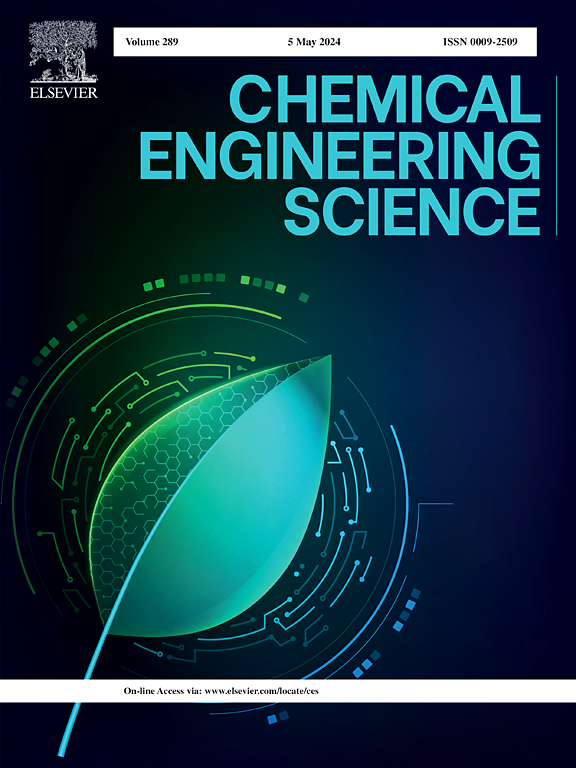The effect of particle surface roughness and biofilm accumulation on the pressure drop over a biofilter
IF 4.1
2区 工程技术
Q2 ENGINEERING, CHEMICAL
引用次数: 0
Abstract
In this study, the pressure drop prediction of the existing granular rectangular Representative Unit Cell (RUC) model, which already accounts for biofilm development and sphericity, is adapted to include particle surface roughness. The novelty of this study is that a surface roughness factor is derived based on physical principles. It was found to be a function of the average height and number of roughness elements, the porosity as well as the particle diameter. This factor is included in both the Darcy and inertial Reynolds number flow terms. The proposed model includes no empirical coefficients and is validated against experimental data for a biofilter, operated over 107 days, with expanded schist as packing material. It was found that a decrease in average particle shape factor produced an increase in surface roughness over time. The average shape factor was also introduced in order to increase the interstitial form drag coefficient. The average surface roughness of the packing material was measured with a confocal microscope, by utilizing white light microscopy, and the value was used in the pressure gradient prediction of the RUC model. The proposed model is compared to a modified Ergun equation, adjusted to be applicable to biofilters, and satisfactory results are obtained. A sensitivity analysis is also performed on the average height of surface roughness elements, particle diameter, and average particle shape factor. The proposed model is an improvement on the existing models from the literature considered in this study.

颗粒表面粗糙度和生物膜积累对生物过滤器压降的影响
在本研究中,现有的颗粒矩形代表单元细胞(RUC)模型的压降预测已经考虑了生物膜的发育和球形性,并进行了调整,以包括颗粒表面粗糙度。本研究的新颖之处在于基于物理原理推导出表面粗糙度因子。发现它是平均高度和粗糙元素数量、孔隙率和颗粒直径的函数。这个因素包括在达西和惯性雷诺数流动项中。该模型不包含任何经验系数,并通过使用膨胀片岩作为填料的生物过滤器运行107天的实验数据进行了验证。研究发现,随着时间的推移,平均颗粒形状因子的降低会导致表面粗糙度的增加。为了提高间隙形式阻力系数,还引入了平均形状因子。利用白光显微镜共聚焦显微镜测量包装材料的平均表面粗糙度,并将其值用于RUC模型的压力梯度预测。将该模型与修正后的厄根方程进行了比较,并对其进行了调整,使其适用于生物过滤器,得到了令人满意的结果。对表面粗糙度元素的平均高度、颗粒直径和平均颗粒形状因子进行了敏感性分析。本文提出的模型是对本研究文献中已有模型的改进。
本文章由计算机程序翻译,如有差异,请以英文原文为准。
求助全文
约1分钟内获得全文
求助全文
来源期刊

Chemical Engineering Science
工程技术-工程:化工
CiteScore
7.50
自引率
8.50%
发文量
1025
审稿时长
50 days
期刊介绍:
Chemical engineering enables the transformation of natural resources and energy into useful products for society. It draws on and applies natural sciences, mathematics and economics, and has developed fundamental engineering science that underpins the discipline.
Chemical Engineering Science (CES) has been publishing papers on the fundamentals of chemical engineering since 1951. CES is the platform where the most significant advances in the discipline have ever since been published. Chemical Engineering Science has accompanied and sustained chemical engineering through its development into the vibrant and broad scientific discipline it is today.
 求助内容:
求助内容: 应助结果提醒方式:
应助结果提醒方式:


